
Sukana Pita is a traditional cheese pastry from Southeastern Serbia, the area my wife hails from. This phyllo style pastry in different variations is also traditional throughout the rest of Western Balkans including neighboring Bulgaria, Romania and Macedonia. Typically Sukana Pita belongs to breakfast menu and is often served as a warm entree. It is the best when is freshly baked and enjoyed with a smooth, thin yogurt, which is a common variety in Serbia. The taste is similar to yogurt available in Canadian supermarkets but thinner and therefore frequently served as a drink.
During our holidays in Serbia we visited Bela Palanka, a little town in Southeastern Serbia well known for its traditional annual “Sukana Pita” pastry festival. The festival is regularly held in the mid August over the course of three days. One notable attraction is a juried competition among locals in making the best Sukana Pita or “Banica” as they call it there. Assembled international panel of judges from the region selects and rewards the best ones.

Unfortunately we were not there in time for this year festival, but Sukana Pita is available all year long at the town bakeries. We had it for breakfast and the taste was superb! Crisp on the outside and soft with creamy cheese filling on the inside. Aroma of fresh bake was irresistible. That was a call to make my own when I get back home to Canada. Why wait for the next trip to Serbia when I can make my own whenever I want to? I love these challenges especially when I know what the reward is. After few trials I arrived at what in my opinion Sukana Pita should taste like. My wife’s comment, after tasting it ; “the same as when my grandma made it..” removed any doubt.
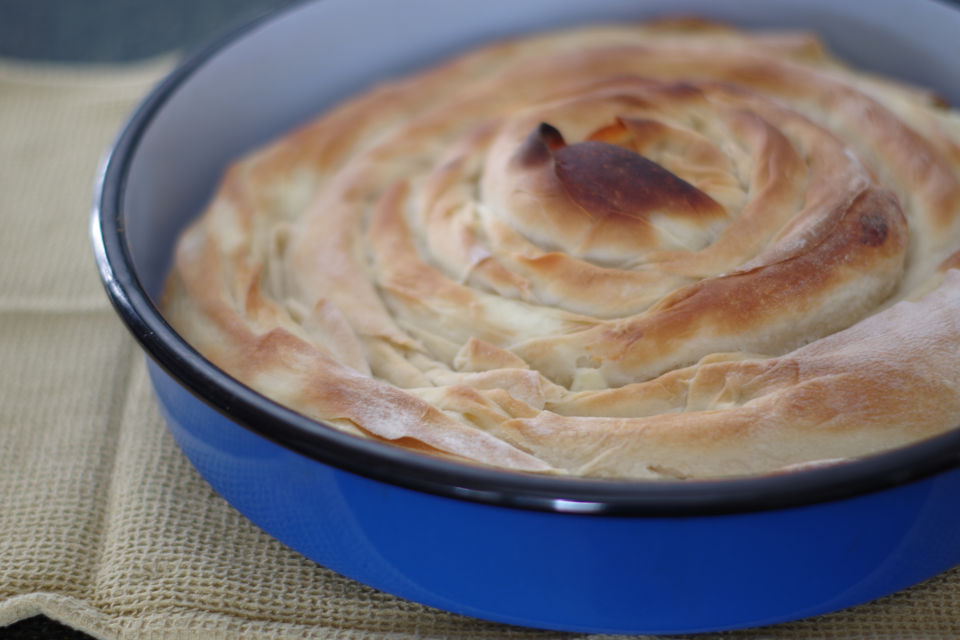
The list of ingredients is short, basic and easily accessible. The only exception is a filling. Original pie filling is normally made with a farm produced soft cow cheese. To replicate it or to really find a suitable substitute was a challenge. Through the trial and error I assembled a combination of ingredients that work really well together, closely approximating the original.
Dough stretching might look challenging at first but it is matter of practice. All you need is a thin, long rolling pin. You can make it yourself out of wooden dowel as I did. Make sure your work bench and the dough are always well floured. Be patient and the more you do it the easier it will become.

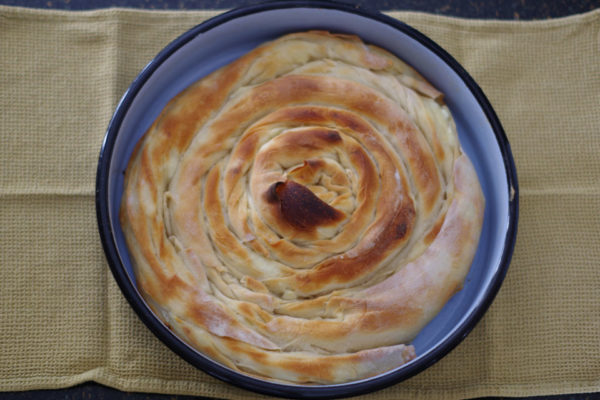
| Prep Time | 45 min |
| Cook Time | 17 min |
| Passive Time | 20 min |
| Servings |
servings
|
- 500 g all purpose non bleached flour
- 270 ml water lukewarm
- 10 g granulated sugar
- 8 g sea salt
- 15 g yeast fresh
- 30 ml vegetable oil for coating
- 250 g Fetta cheese crumbled
- 2 tbsp sour cream
- 2 tbsp vegetable oil
Ingredients
Dough
Filling
|

|
- Sift flour into a medium size mixing bowl and stir in the salt.
- In a small sauce pan warm up water and dissolve crumbled, fresh yeast and sugar.
- Add yeast solution to the flour mix and kneed to make a medium hard dough, about 5-6 minutes.
- Roll the dough into a cylinder and then divide into 5 equal parts.
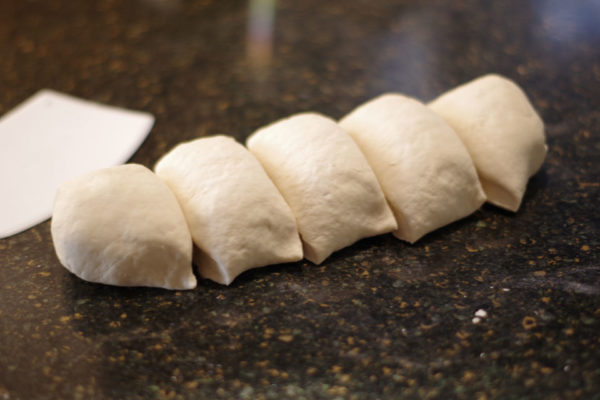
- Roll each part again into a smaller cylinder and divide into 3 equal sections. Using a circular motion between your palms make a little ball from each. Arrange dough balls into 5 groups of 3. Lightly dust with flour and cover to prevent drying out.
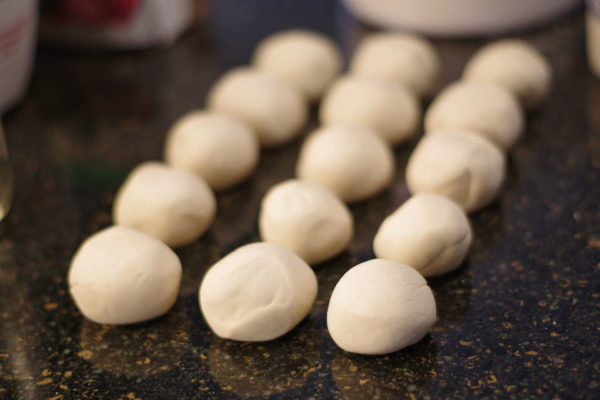
- On floured counter with your palm gently flatten the first ball into a disk shape. Using a rolling pin make 6-8 cm (~3") flat disc, put aside. Using a pastry brush lightly oil the top of the disc.
- Using the same technique make another disc and place it up on the first one, lightly oil the top of the second disc.
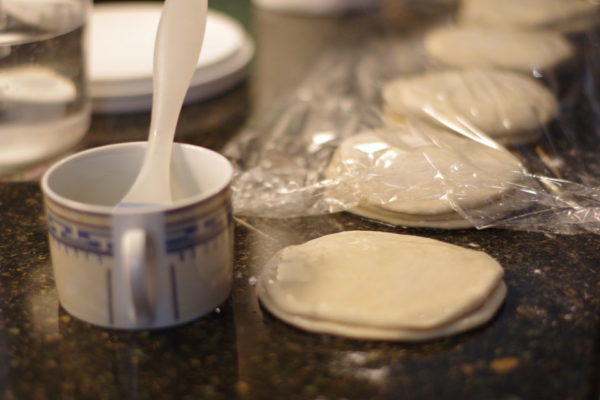
- Make the third disk and stack it up on top of previous two. Do not coat with oil, instead just lightly dust with flour.
- Repeat the same process and create 4 more stacks of 3 dough discs each. Cover and let them rest for 20 minutes.
- Using a rolling pin roll out each group of 3 stacked dough discs into a thin sheet. The discs are separated by oil layer which will help creating laminate structure of the pastry. Roll the dough out by lightly pressing down on rolling pin, pulling gently outwards with your fingers, and not palms. Frequently flip the dough and use plenty of flour to prevent sticking. Don't rush it! It takes patience and practice to develop a thin phyllo pastry dough.
- Sprinkle stretched dough with vegetable oil, spread the filling evenly across the dough,
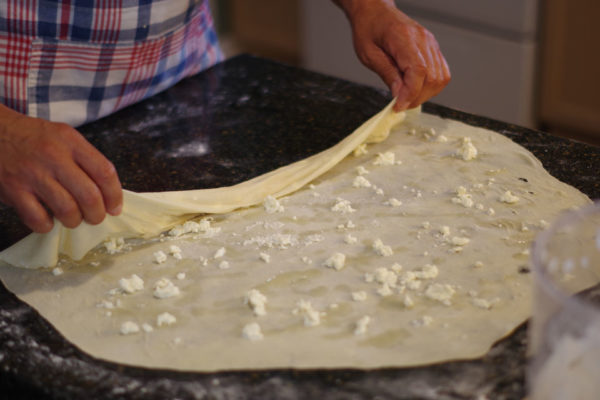
- Roll the dough to loosely wrap the contents. Forming a snail shape, and starting from the center, put the rolled dough into a 30cm (12") round buttered baking pan,
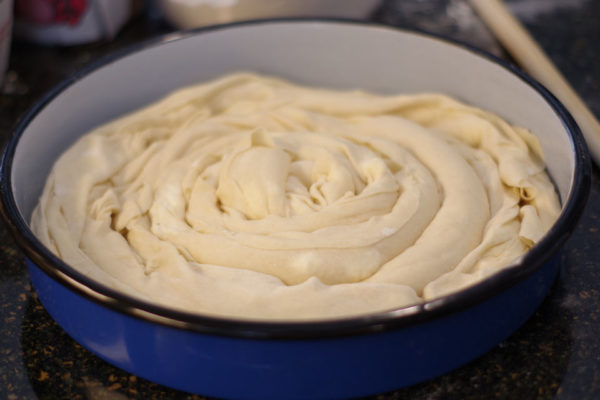
- Repeat the same process with the reminding 4 dough stacks.
- Pre- warm the oven to 250ºC (480ºF) with the rack in the middle.
- Bake for 17-20 min or until golden brown crust is formed. Serve warm.
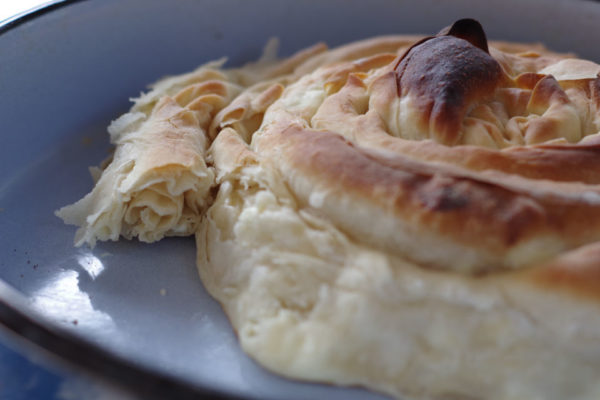
- Crumble feta cheese into a medium size bowl. Incorporate vegetable oil and sour cream, stir well until paste like. Divide into 5 equal parts.
- Recipe Update (November 23, 2019): If "Five Roses" all purpose flour is used (Canada) the best results are achieved if water amount in recipe is increased to 330 ml.

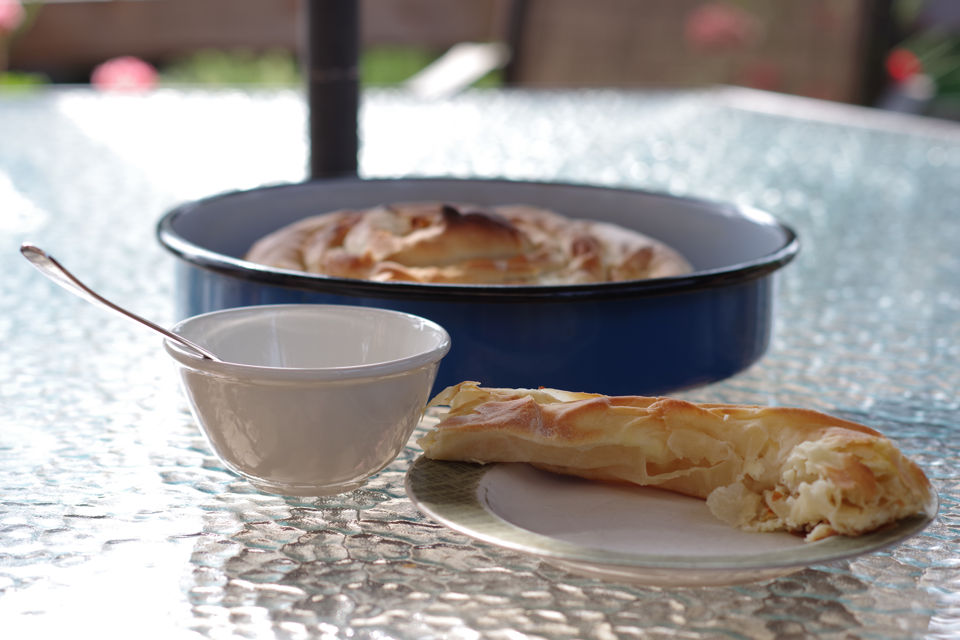
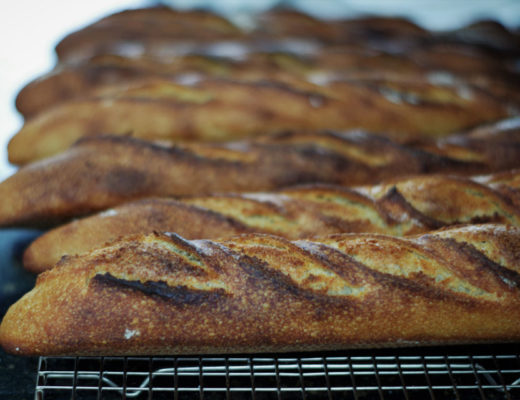
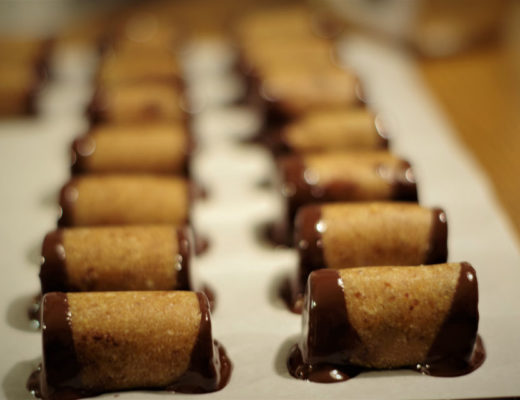
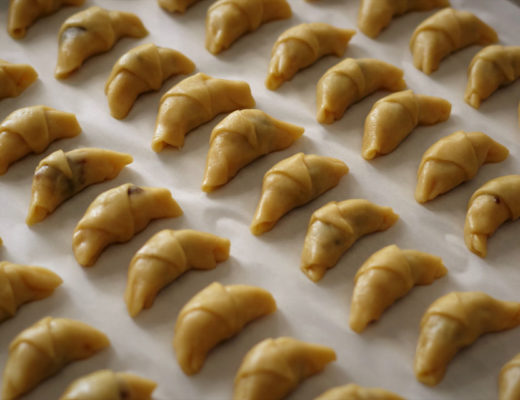
No Comments